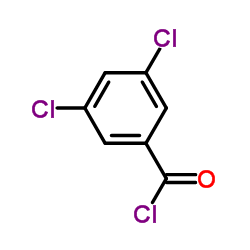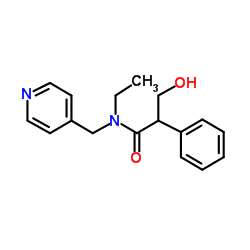40796-97-2
| Name | 1aH,3a,5a,H-tropan-3-yl-3,5-dichloro-benzoate |
|---|---|
| Synonyms |
bemesetron
Benesetron tropyl3,5-dichlorobenzoate tropine 3,5-dichlorobenzoate 8-methyl-8-azabicyclo<3.2.1>oct-3-yl 3,5-dichlorobenzoate 3-TROPANYL-3,5-DICHLOROBENZOATE TROPANYL 3,5-DICHLOROBENZOATE |
| Description | Bemesetron (MDL 72222) is a selective 5-HT3 receptor antagonist with an IC50 of 0.33 nM[1]. Neuroprotective effects[2]. |
|---|---|
| Related Catalog | |
| Target |
5-HT3 Receptor:0.33 nM (IC50) |
| In Vitro | Blockade of 5-HT3 receptor with Bemesetron (MDL7222) reduces hydrogen peroxide-induced neurotoxicity in cultured rat cortical cells. Bemesetron (0.01, 0.1 and 1 μM) and Y25130 (0.05, 0.5 and 5 μM) concentration-dependently reduce the H2O2-induced decrease of MTT reduction showing 74.9±2.4 and 79.0 ±2.5% with 1 μM and 5 μM, respectively, which are maximal effects[2]. Pretreatment with Bemesetron (1 μM), Y25130 (5 AM) or MK-801 (10 μM) significantly, but not completely, inhibits the H2O2-induced elevation of [Ca2+]c[2]. Bemesetron (1 μM) inhibit H2O2-induced elevation of glutamate release showing 0.55±0.10 μM[2]. Bemesetron (1 μM) inhibits H2O2-induced ROS generation[2]. Bemesetron (1 μM) significantly blocks the H2O2-induced increase of caspase-3 immunoreactivity[2]. |
| In Vivo | Bemesetron is used in the doses of 0.1, 1 and 10 mg/kg i.p. The lowest dose do not cause any significant change in catalepsy. However, 1 mg/kg Bemesetron causes a significant reduction of catalepsy (from 90 min after haloperidol), while 10 mg/kg significantly potentiates the phenomenon (from 60 min after haloperidol). The maximum inhibition of catalepsy (about 75%) occurs at 120 min, and the maximum potentiation (about 4.5-times the control value) occurs at 60 min after haloperidol[3]. |
| References |
| Density | 1.344g/cm3 |
|---|---|
| Boiling Point | 406.507ºC at 760 mmHg |
| Molecular Formula | C15H17Cl2NO2 |
| Molecular Weight | 314.20700 |
| Flash Point | 199.648ºC |
| Exact Mass | 313.06400 |
| PSA | 29.54000 |
| LogP | 3.71330 |
| Index of Refraction | 1.597 |
| Storage condition | 2-8°C |
CHEMICAL IDENTIFICATION
HEALTH HAZARD DATAACUTE TOXICITY DATA
|
|
~% 
40796-97-2 |
| Literature: Merrell Dow Pharmaceuticals Inc. Patent: US4563465 A1, 1986 ; |
| HS Code | 2933990090 |
|---|---|
| Summary | 2933990090. heterocyclic compounds with nitrogen hetero-atom(s) only. VAT:17.0%. Tax rebate rate:13.0%. . MFN tariff:6.5%. General tariff:20.0% |

